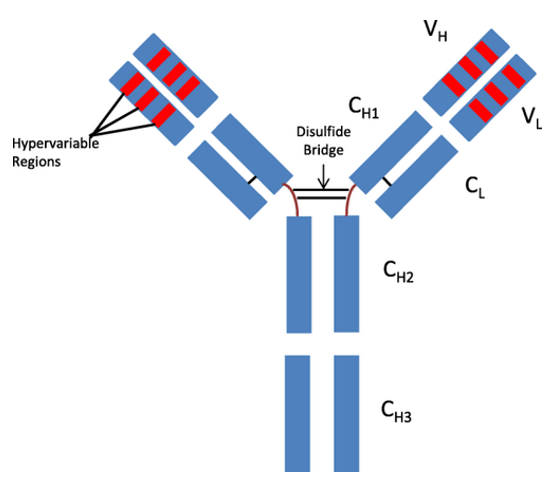Therapeutic monoclonal antibodies (mAbs) are a class of antibody drugs that are highly uniform and have pharmacological effects against a single epitope obtained through molecular biology.

In the process of new drug development, the study of pharmacokinetics is of great significance. The result can be used to guide the screening and development of drugs, and support the evaluation of their safety and the design of clinical drug delivery protocol.
Pharmacokinetic characteristics are composed of and determined by drug absorption, distribution, metabolism and excretion. The structure, physiological properties and pharmacokinetic characteristics of monoclonal antibodies are different from those of traditional small molecule drugs. For example, their molecular weight, volume and polarity are much higher than those of small molecule drugs, which make the pharmacokinetic properties of mAbs different. The specific binding between the mAb and the target can also greatly affect the elimination of the mAb drug. The following will discuss the mechanism and characteristics of mAb pharmacokinetics in terms of absorption, distribution, and elimination.
Absorption
The bioavailability of protein drugs such as antibodies is extremely low after oral administration. The reasons include: 1) Protein is easy to denature in acidic gastric juice; 2) Protein is easily degraded by a large number of hydrolytic enzymes in the gastrointestinal tract; 3) Protein is large and polar, so it is not easily absorbed by gastrointestinal epithelial cells through diffusion. Therefore, most mAb drugs are administered by intravenous injection, and a small part is administered by subcutaneous or intramuscular injection.
Drug distribution
The mAb has a large molecular weight and strong hydrophilicity, and it is difficult to freely diffuse into the tissue. Its distribution in the tissue is very slow, and the volume of distribution is usually small, so the mAb drugs are generally limited to the blood vessels and the interstitial space of the tissue.
After intravenous injection, the distribution of mAb from vascular to interstitial space is mainly through convection (fluid flow from the blood to interstitial space) and binding between antibody cells, or through receptor-mediated endocytosis, phagocytosis, and pinocytosis in the liquid phase. Other factors that influence the distribution of mAbs include diffusion, removal from tissues, and biophysical properties of mAbs, such as molecular charge and hydrophobicity. In the case of specific binding of an antibody to an antigen, other aspects such as binding affinity, receptor expression, receptor conversion kinetics, and antigen-mAb binding interaction will also affect the distribution.
Metabolism and excretion
Due to the extremely large molecular weight, antibodies cannot be excreted from the kidneys in prototype form, nor can they be metabolized by liver drug-metabolizing enzymes, but are mainly eliminated by intracellular enzyme degradation. Enzyme degradation produces smaller peptides and amino acids that are eliminated by metabolism in the form of energy materials or raw materials for protein synthesis. The elimination mechanisms of monoclonal antibody drugs mainly include: antigen-mediated elimination, pinocytosis, FcRn-mediated IgG protection, FcγR-mediated elimination, and neutralization of anti-drug antibodies (ADA).
Scientists from Creative Proteomics are professional and experienced in metabolites analysis and pharmacokinetic analysis of biological pharmaceutical products. Creative Proteomics offers different aspects of service including metabolites separation, metabolites identification and immunological assay & biological assay for pharmacokinetic analysis. In addition, we can provide customized pharmacokinetics services for biopharmaceutical products.






